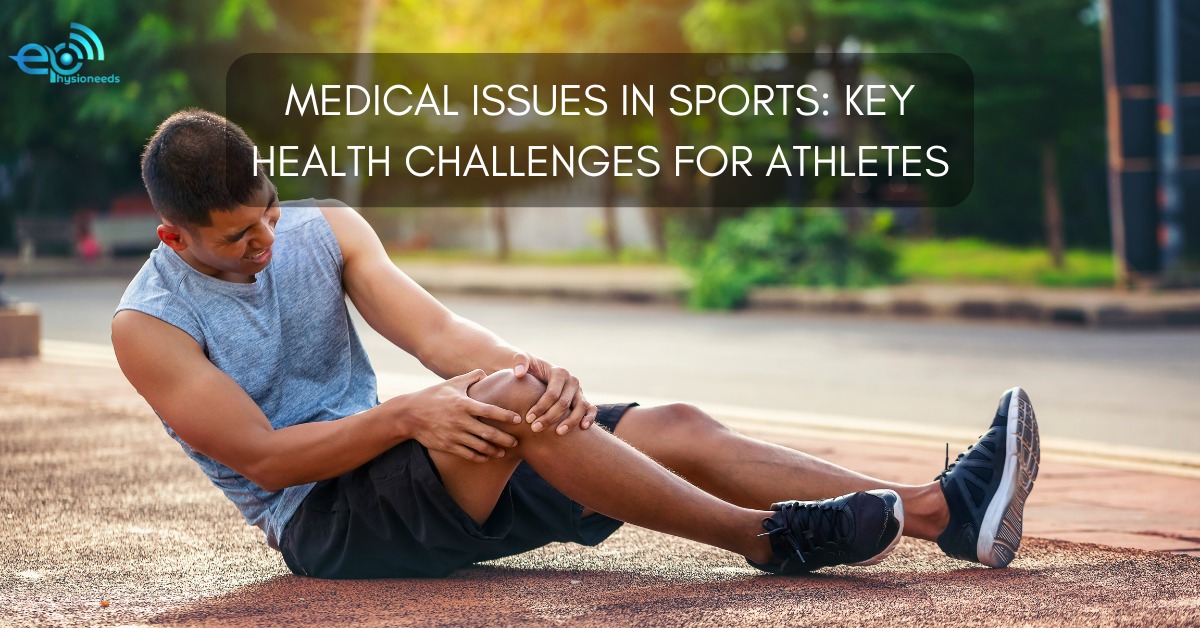Explore common medical issues in sports, their impact on athletes, and preventive measures for optimal health and performance in competitive activities.
Importance of Athlete Health: A Nation’s Asset
Athletes play a significant role in representing their country on global platforms. They are considered valuable assets, and their health must be prioritized. To ensure their well-being, various sports complexes provide free medical facilities, and athletes must undergo proper medical checkups before participating in sports. Fitness is the cornerstone of athletic performance, and a comprehensive assessment helps identify any medical conditions that may affect their game or pose risks during participation.
Role of Medical Assessment in Sports Performance
Understanding the interplay between medical conditions and athletic performance is crucial. Physiotherapists, trainers, and medical professionals must have a basic understanding of common illnesses and their potential effects on performance. Pre-competition medical assessments (PCMA) are vital in ensuring athletes are fit to compete and safeguarding their health.
For athlete protection, the following steps are recommended:
- Undertake a pre-competition medical assessment (PCMA).
- Complete a medical profile form to document medical history.
- Notify sports trainers about any changes in health or medication, including temporary illnesses.
Common Health Issues in Athletes
1. Diabetes
Diabetes is prevalent among athletes and can be managed effectively through proper monitoring and dietary adjustments. Many athletes with diabetes perform at high levels with adequate medical support.
2. Neurological Conditions
Conditions like concussions pose significant risks to athletes. Repeated head injuries increase the chance of permanent brain damage. Evaluations should assess both the general risks of the sport and the specific vulnerabilities of the athlete.
3. Asthma
Asthma, including sport-induced asthma, is one of the most common conditions affecting athletes. It involves inflammation and narrowing of the airways, which can be hereditary or environmental. Proper treatment, often involving inhaled corticosteroids and bronchodilators, allows athletes to participate fully.
4. Exercise-Associated Muscle Cramps
Painful cramps in the legs, back, and abdomen after prolonged exercise in heat are common, particularly during the early season when athletes are less acclimated to heat.
5. Heart Conditions
Athletic performance can sometimes exacerbate heart conditions. In younger athletes, hypertrophic cardiomyopathy (HCM) is a leading concern, while coronary artery disease is more common in those over 35.
Managing Heat and Hydration-Related Concerns
Heat Stroke
Heat stroke is a severe condition resulting from excessive heat exposure during exercise. It leads to disorientation, nausea, vomiting, and dangerously high body temperatures. Immediate medical attention is essential.
Dehydration and Hyperthermia
Dehydration occurs when fluid levels drop due to sweat loss, reducing the body’s ability to regulate temperature. Hyperthermia, on the other hand, is caused by prolonged exposure to heat and can escalate to heat stroke if untreated. Factors contributing to heat-related issues include:
- Hot, humid conditions
- Recent illness
- Lack of acclimatization
- Intense workouts
- Dehydration
Overtraining Syndrome and Its Impact
Overtraining syndrome can lead to reduced performance despite adequate training and nutrition. Symptoms include chronic fatigue, frequent infections, poor sleep, and mood disturbances. Recovery involves rest, routine adjustments, and sometimes medication.
Severe Conditions Requiring Attention
Rhabdomyolysis
This condition arises from extreme muscle damage caused by intense training. It can release harmful substances into the bloodstream, potentially damaging the kidneys and liver. Severe pain and dark urine are warning signs requiring immediate care.
Deep Vein Thrombosis (DVT)
DVT occurs when a blood clot forms in a large vein, often in the lower legs. It can result from trauma, prolonged inactivity, or genetic disorders. Accurate diagnosis is crucial to distinguish DVT from other conditions like muscle strains or superficial thrombophlebitis.
Miscellaneous Concerns in Athletes
Runner’s Stitch
A common but non-dangerous condition, a runner’s stitch is a cramp-like pain in the side during prolonged exercise, often linked to sodium imbalances or gastrointestinal issues.
Sports Hematuria
This benign condition involves the presence of red blood cells in urine after intense exercise. It typically resolves within 72 hours without complications.
Thermoregulation Challenges
Extreme weather conditions, whether hot or cold, can impair athletic performance. Athletes with spinal cord injuries are particularly vulnerable to temperature regulation issues.
Conclusion
The health of athletes is paramount for their performance and longevity in sports. By prioritizing pre-competition medical assessments, addressing common medical conditions, and managing risks like heat-related illnesses and overtraining, athletes can sustain their performance and well-being. A physiotherapist’s role is indispensable in understanding and addressing these challenges to ensure the athletes’ safety and success.
The impact of proprioception and coordination in sports persons also highlights the need for a holistic approach in training and medical care. This ensures that athletes are not only physically fit but also equipped to manage the unique demands of their sport.
Related Articles
Why CPD is Must for Every Physiotherapist’s Growth
Discover the importance of CPD for physiotherapists, its benefits, steps, and how it elevates skills, confidence, and career growth in clinical practice.
Muscle Energy Technique: A Key Tool in Physiotherapy
Learn effective strategies for functional rehabilitation after spinal surgeries to boost recovery, restore mobility, and improve strength for a better life.
